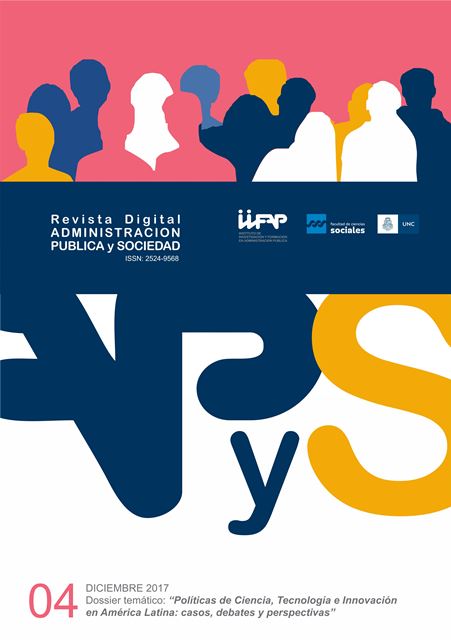Some lessons from mexico’s program for innovation promotion
Main Article Content
Abstract
Article Details
Authors who publish in this journal accept the following terms of the copyright policy:
- Authors shall retain their copyright (including copyrights) and shall grant to the journal the right of first publication of their work, which shall simultaneously be subject to the Creative Commons Recognition License: No commercial use of the original work or any derivative works is permitted, distribution of which must be made under a license equal to that which governs the original work.
- Authors may adopt other non-exclusive license agreements for the distribution of the version of the published work (e.g., placing it in an institutional repository or publishing it in a book) provided that the initial publication in this journal is indicated.
- Authors are allowed and encouraged to disseminate their work through the Internet (e.g., in institutional repositories or on their website) after the publication process, which may lead to interesting exchanges and increased citations of the published work. (See The Effect of Open Access).
How to Cite
References
Archibugi, D., 2001. Pavitt taxonomy: sixteen years on: a review article, Economy Innovation new technology, Vol. 10: 415-425.
Dosi, G., Freeman, C., Nelson, R., Silverberg, G. and Soete, L., 1988. Technical Change and Economic Theory, London, New York: Pinter Publishers.
Foro Consultivo Científico y Tecnológico. (2006).“Informe de actividades junio 2004-2006”, FCCyT, México
Greenacre, M., 2007. Correspondence analysis in practice, 2nda. Edición, Chapman and Hall: 274.
Hair, J., Anderson, R., Tatham, R., y Black W., 2005. Análisis Multivariante, 5a edición, Pearson Prentice Hall: 799.
Hardle, W. y Leopold S., 2007. Applied Multivariate Statistical Analysis, Ed. Springer: 486.
Miyamoto, S., 1990. Fuzzy Sets in information Retrieval in Cluster Analysis, Springer-science: 259.
Nelson, R. y Winter, S., 1982. An evolutionary theory of economic change, The Belknap Press of Harvard University Press: 454.
Pavitt, K., 1984. Patrones sectoriales de cambio técnico: Hacia una taxonomía y una teoría, Research Policy, Volumen 13, Número 6: 343-373.
The Organization for Economic Co-operation and Development (OECD), 2008. Handbook on constructing composite indicators, Methodology and user guide.
Roberts, S., Husmeier, D., Rezek, I., y W. Penny, (1998). Bayesian approaches to gaussian mixture modelling. IEEE Transactions on Pattern Analysis and Machine Intelligence, 20(11): 1133-1142.
Valenti, G., Casalet, M., Avaro, D., 2008. Instituciones sociedad del conocimiento y mundo de trabajo, FLACSO México, Plaza y Valdés Editores: 473.
Watanabe, M., Yamaguchi, K. 2004. EM algorithm in neural network learning. En N. Murata, S. Ikeda (Eds.) The EM algorithm and related statistical models. New York: Marcel Dekker: 95-125.
VILLAVICENCIO D., (2009), “Recent changes in science and technology policy in Mexico: innovation incentives” en Martínez J.M. (Ed.) Generation and Protection of Knowledge: intellectual property, innovation and economic development, ECLAC, United, Nations, Santiago, pp. 263-290
VILLAVICENCIO D., (2011), “Retos para el diseño de políticas en México en el marco de la innovación abierta”, en Bracamontes A. y O. Contreras (eds), Ciencia, Tecnología e Innovación para el Desarrollo Económico, COLSON-COECYT, México, pp. 73-102
VILLAVICENCIO D., (2012), “Incentivos a la innovación en México: entre políticas y dinámicas sectoriales” en Carrillo, Hualde y Villavciencio., (Eds.), Dilemas de la innovación en México, COLEF-Red CCS, México, pp. 27-72

